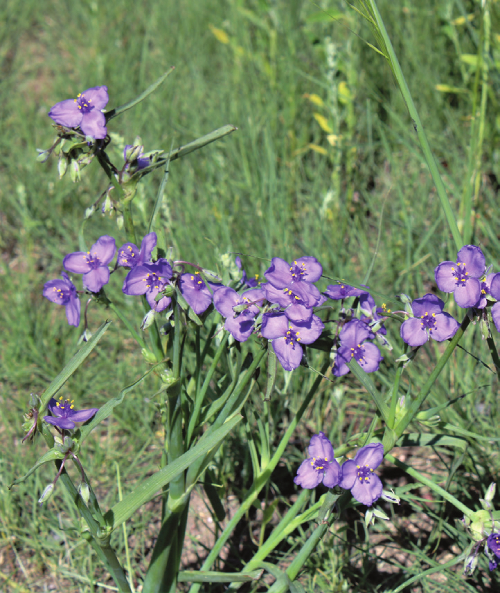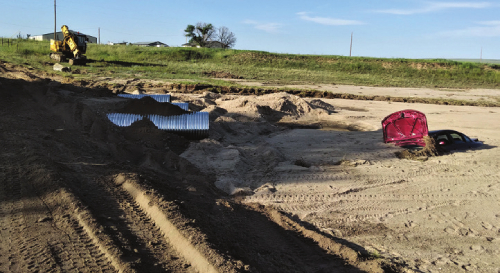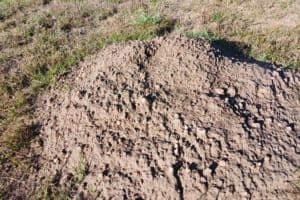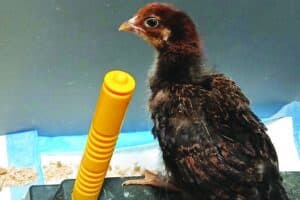After the rains: menacing mosquitoes, road repairs
By Bill Radford
While we’re heading into the dog days of summer, the impact of our wet spring — which I wrote about last month — is still being felt.
I’m always fascinated by which weeds and wildflowers pop up each summer — a difference, I assume, that is determined by the season’s particular combination of sun, rain and temperatures. Nearly a decade ago, for example, it was the summer of the plains coreopsis, a cheery, daisylike flower that consumed our pasture in numbers never seen since. This summer, at least in our corner of the prairie, has been dominated by what I believe to be Western spiderwort.
As described by the U.S. Department of Agriculture, “Western spiderwort is an unusual looking plant with long, pleated leaves and attractive purple flowers. Its blossoms have three purple petals, hairy centers and showy, yellow-tipped stamens. Since the leaves stick out at awkward angles, this plant often looks unkempt and weedy.”
Its formal name is Tradescantia occidentalist; the Lady Bird Johnson Wildflower Center explains it is named after John Tradescant, who served as gardener to King Charles 1 of England. Its native distribution, the center states, ranges from Minnesota to Louisiana and west to the Rockies. Also known as prairie spiderwort, it seems to be a versatile plant. According to the Minnesota Board of Water and Soil Resources, “Native Americans used spiderwort to treat insect bites and stings; as a tea used to treat cramping, stomach and kidney ailments; and as a blue clothing paint.” It’s also seen as “an excellent food source for pollinators.”
So hopefully our bees are enjoying its presence. Meanwhile, as we enjoy our green summer, keep in mind that the massive growth of weeds and other plant life triggered by those spring rains could add up to more fuel for fires later, so keep your mower in working order.
Another threat to be aware of: mosquitoes. Note this warning, issued at the end of June by El Paso County Public Health: “With heavy rain in May and June, there is an early start to mosquito season in El Paso County and Colorado. Public health anticipates higher than average mosquito activity now and into the coming weeks. Areas of the Southwest U.S. — including Colorado — received record levels of precipitation this year, which is creating conditions for mosquitoes, fleas and rodent populations to increase, more so than would typically be seen. Due to this, EPCPH anticipates an increase in the spread of preventable diseases in people and pets that are seen during summer months.”
One of those diseases, West Nile virus, is spread by mosquitoes. “WNV typically occurs in the summer months, though it depends on climate and weather conditions,” El Paso County Public Health states. “Most people infected with WNV do not experience illness; however, 1 in 5 infected people will have a fever illness that is like the flu. Serious WNV infection of the brain or tissues around the brain can occur in about 1 in 150 infected people; those most at risk are people aged 60 years and older or those with diabetes, kidney disease or weak immune systems.”
Twenty years ago, my wife, Margaret, became one of those 1 in 5 with a flulike illness. “It was terrible,” she says, with a crippling fatigue that lasted for two weeks. That was in the early days when West Nile was making headlines; not so much now, but it’s still out there.
As are those mosquitoes. “It’s beyond awful right now,” one person posted on NextDoor, the online community hub. “They’ve definitely ramped up their game!” another posted. But another person, formerly from Wisconsin, noted, “This is just annoying compared to the bird-sized bloodsuckers we had back there.”
Folks on Nextdoor offered various solutions to keep mosquitoes at bay, from lighting coffee grounds to putting a scented dryer sheet in your belt loop or pocket. Among the more familiar advice from El Paso County Public Health: Use an EPA-registered insect repellant, such as DEET, and frequently drain standing water from around your house.
Meanwhile, some people are still dealing with damage caused by the spring’s torrential rains and hail. The Pikes Peak Regional Office of Emergency Management has been gathering information regarding those damages. “The primary purpose of collecting this information is to assess the financial impact of these events on our community as a whole, and to determine potential sources of assistance,” the office stated.
The rains left El Paso County Public Works busy restoring roads. Twenty sections of road were washed out, including Elbert Road, Sweet Road and Peyton Highway at Garrett Road. The county couldn’t provide exact numbers of man-hours and materials used in repairs as “recovery activities” were still being assessed. However, as one example, “Approximately 21,000 tons of subgrade materials and 2,300 tons of surface gravel were washed away” on JD Johnson Road, south of Garret Road, according to an email from Natalie Sosa, the county’s deputy director of communications. “The initial cost estimate based on equipment, manpower and materials is roughly $250,000.” Overall, she said, “Our total damage estimate across the county’s transportation infrastructure is approximately $3.2 million.”
I was impressed by how quickly a section of Log Road was repaired, although there was still work to be done when I saw it. “Public Work crews were able to employ expedient methods, in many cases, to safely reopen roads,” Sosa explained in her email. “One of the methods is the use of low water crossings. This allowed us to apply a temporary ‘fix’ to get roads safely opened until a permanent repair can be done.”

Spiderwort: Western spiderwort, a good food source for pollinators, has been common in the area this summer.

Prairie Life road: Repairs are made to Log Road in early July. Note the car at right, which presumably was washed off the road; it has since been removed.
As we enjoy our green summer, keep in mind that the massive growth of weeds and other plant life triggered by those spring rains could add up to more fuel for fires later, so keep your mower in working order.





